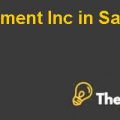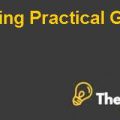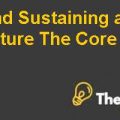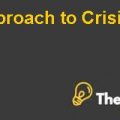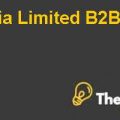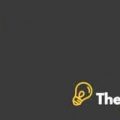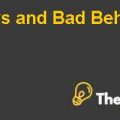Leadership Challenges in Developing Countries in Light of the Global Strategy for Achieving Clean Energy Initiative Project Case Study Analysis
Introduction
Background
In the new changing and developing industry period, there are various organizations and different nations involved to reduce carbon emissions. There are various challenges rise in this period in front of the industry leader in the shape of a global strategy that helps to reduce carbon emissions and try to achieve new cleaning energy initiatives.
In this period the revolution in industries changed rapidly by considering the ability to connect and use different forms of energy that ultimately change the living styles of billions of people worldwide and help to create a new level of comfort as compared to the overall history of humans. However, according to the reports, the consumption of energy has increased in the last 200 years, which consider being strictly tight to the level of wealth and financial break.
The global leadership is rising to overcome this problem and have launched specific initiatives aimed at achieving energy sufficiency using cleaner forms of energy. The initiative is motivated by concerns about global warming and the need to reduce carbon emissions. A blanket strategy has been proposed, and several fora have been championed, but no agreement on the approach has been reached.
While major economies have achieved energy sufficiency and are looking for alternative solutions to replace fossil fuel-driven energy sources, developing economies are still grappling with a level of underdevelopment and are focused on using every available resource to supply energy without harming the environment.
The major problem lies with the integration of the leadership to surpass this factor and to analyze the technological and funding issues thereby arising in these areas. The major reasons for these issues lie with the leadership and financial problem linked with the mindset of leaders. Some democratic issues also lie behind the back. There is a demand for a consecutive strategy for the entire leadership to follow in order to overcome the current problems and to agree upon a united strategy to be followed.
After analyzing the carbon emission rates there is a need to cover the developed and developing countries involved in this situation. Developed countries consider high industrialized rates and high per capita income as compared to the developing countries because of their high involvement in energy consumption which is now considered a big global challenge in front of the various national leaders.
There is a total of two frameworks considered to be highly involved and relate to the overall research, which are leadership challenges and it is implemented strategies to achieve clean energy initiatives and the other is “the Power of Doubt” which presents that most of the implemented decisions are applied under some uncertainty without including its reality.
Problem Outline
The major problem in this case lies with the integration of the strategies among leaderships to overcome the clean energy usage problem and to agree upon the major principles of the blanket strategy being proposed. Other major problems lie with the leadership problems in developed and underdeveloped countries and the technological and funding issues being faced in the regions thereby involved.
Solution Insights
The main solution that could be held are the alternative solutions to integrate the leaderships to solve the current problem. The unity of the leaderships via United Nations or other organizations to optimize the best possible way to overcome the current hurdles. Attending TED talks related to motivational speeches for the solution of current problems. Breaking these tasks in small portions and ensuring their correct implementation are the best way to deal the hurdle.
Organization and Problem
Clean energy
Using clean energy is more cost efficient and less harmful to the environment than using fossil fuels. Using renewable energy is also better for the economy. A wind turbine generates electricity by spinning a generator. Solar panels collect sunlight and turn it into an electrical charge. Hydropower, on the other hand, is a natural renewable source of energy. Water flowing over a turbine turns a generator. Biomass is another renewable energy source. It contains chemical energy that the sun has stored for us..........
This is just a sample partial case solution. Please place the order on the website to order your own originally done case solution.

